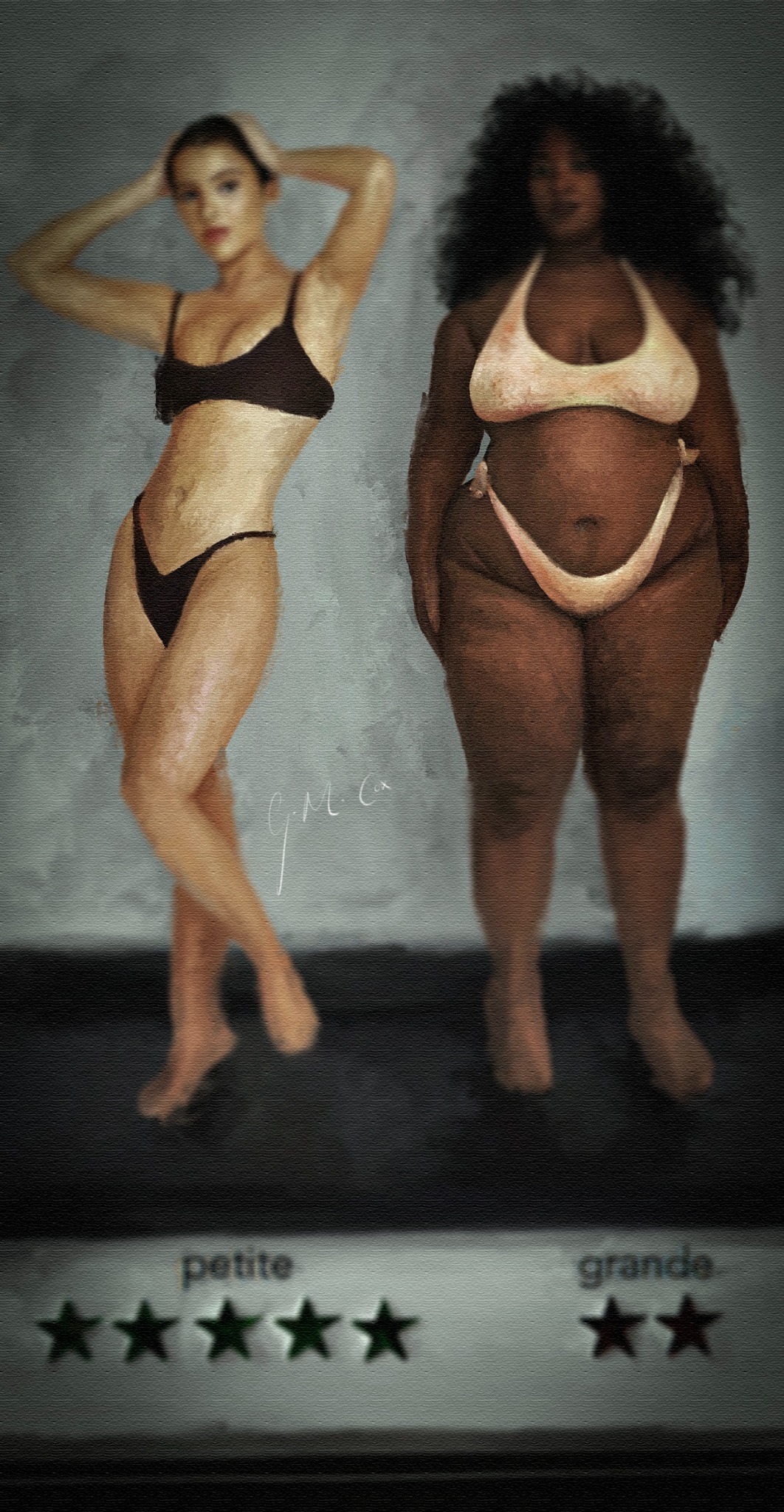
Top Rated (2023)
Top Rated (2023) critiques the digital commodification of women’s bodies. Merging Baroque portraiture with modern rating interfaces, Georgina M. Cox exposes the tension between beauty, judgement, and value in the age of online validation.
⤷ Top Rated began as an exploration of how society measures worth. I was thinking about how images of women are constantly ranked, reviewed, and compared, often without consent. The act of looking has shifted from appreciation to assessment, and this painting places that tension directly in view.
Two women stand side by side, painted in warm, lifelike tones that echo classical figure studies. Beneath them, a cold digital interface displays a star rating: “petite” on the left, “grande” on the right. The contrast between painterly realism and graphic minimalism is deliberate — one honours the human form, while the other objectifies it.
The language of the rating system is intentionally simple, almost absurd. It mimics the structure of online reviews, where bodies are treated like products and desirability becomes a form of currency. By using French words (“petite,” “grande”), I wanted to hint at how global and ingrained these ideals have become, echoing the universality of beauty hierarchies across cultures.
Light and colour play an important emotional role. The Baroque influence brings warmth, depth, and softness to the skin, while the backdrop remains muted and clinical. The contrast between intimacy and detachment mirrors how digital culture flattens individuality — what is sacred becomes searchable, what is human becomes rated.
Thematically, Top Rated sits at the intersection of my ongoing interest in body politics, media psychology, and the female gaze. It questions how digital environments distort self-perception and how “empowerment” is often presented through the same mechanisms that enforce control.
Ultimately, the painting is about resistance through exposure. By showing the system at work, it refuses to participate quietly. Top Rated asks us to look — not to judge, but to understand how easily we’ve been taught to.
0 Comments Add a Comment?